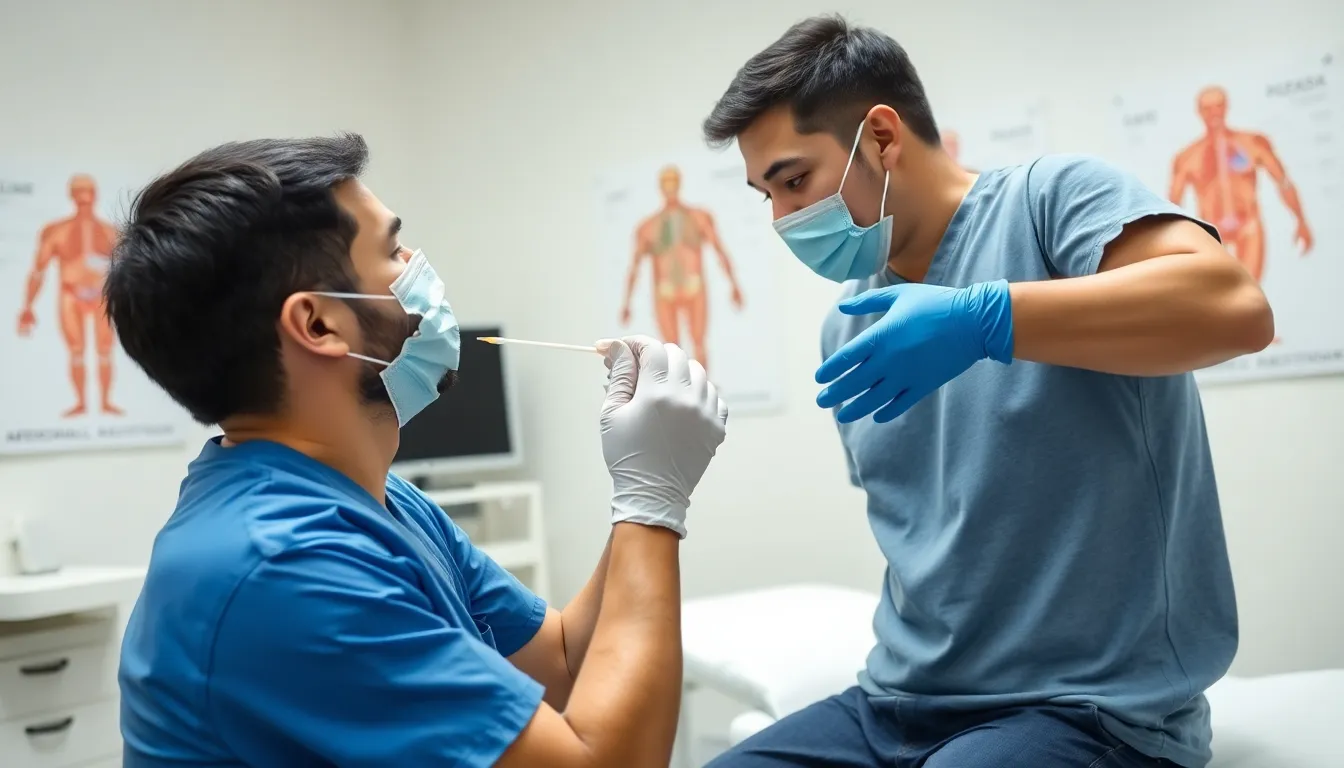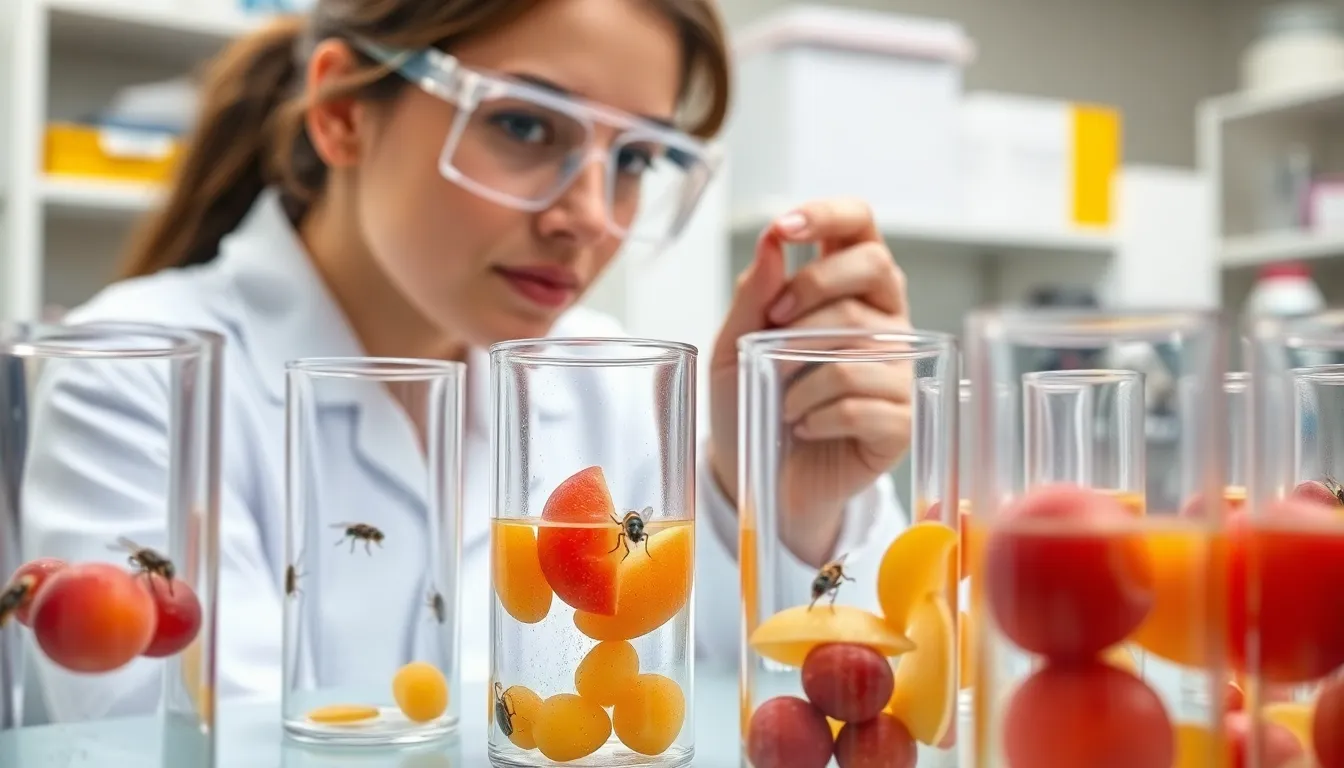In a world where germs are the new celebrities, the viral culture swab is the ultimate backstage pass. This unassuming little tool has become a vital player in the fight against infections, helping scientists uncover the mysteries of viruses lurking in the shadows. Imagine a tiny detective, armed with a cotton swab, ready to collect evidence from the scene of the crime—your throat, your nose, or even that suspicious sneeze at the office.
But it’s not just about catching the bad guys; it’s about understanding them. With every swab, researchers gain insights that could lead to groundbreaking treatments and vaccines. So next time you hear about a viral culture swab, remember: it’s not just a stick with a fuzzy end; it’s a key player in the quest for a healthier world. Who knew saving the day could be so swab-tastic?
Table of Contents
ToggleUnderstanding Viral Culture Swabs
Viral culture swabs play a vital role in identifying and understanding infections. These specialized swabs gather samples from various body areas, facilitating virus detection and analysis.
What Is a Viral Culture Swab?
A viral culture swab is a medical tool designed to collect specimens for laboratory examination. Common collection sites include the throat, nose, and other mucosal surfaces. This tool stores samples in a specific medium, enabling the growth of viruses in controlled environments. Medical professionals utilize viral culture swabs to isolate and identify pathogens effectively. By analyzing the cultured viruses, researchers gain insights into viral behavior and variations.
Importance of Viral Culture in Diagnosis
Viral culture significantly enhances diagnostic accuracy in clinical settings. Detecting live viruses helps differentiate between viral and bacterial infections, guiding appropriate treatment strategies. Accurate identification reduces the risk of incorrect treatments and promotes targeted therapies. Furthermore, viral cultures provide critical data for understanding emerging viral threats. These data enable public health officials to track infections and develop preventative measures.
Types of Viral Culture Swabs

Viral culture swabs come in various types, each tailored for specific anatomical sites. Understanding these types aids in maximizing diagnostic effectiveness.
Oral Swabs
Oral swabs target the throat or oral cavity for viral specimen collection. These swabs detect infections in the upper respiratory tract, including viruses like influenza. Collecting an oral swab involves inserting the swab into the mouth and swiping it across the tonsils or the back of the throat. This method’s ease of execution makes it suitable for broader screening in clinical settings. Accuracy in culture growth is crucial, particularly for identifying respiratory viruses.
Nasopharyngeal Swabs
Nasopharyngeal swabs collect specimens from the nasopharynx, located at the back of the nose and above the throat. Their design includes a longer, flexible shaft to reach deep into this area. Such swabs are critical for diagnosing respiratory viruses, particularly SARS-CoV-2, which causes COVID-19. This method provides a higher yield of virus compared to oral swabs. Proper technique ensures effective sample collection and enhances diagnostic reliability.
Other Specimen Types
Other specimen types include conjunctival, rectal, and wound swabs. Conjunctival swabs gather samples from the eye, useful for detecting viral conjunctivitis. Rectal swabs assess gastrointestinal infections, providing insights into viruses like rotavirus. Wound swabs obtain samples from infected areas on the body, essential for identifying local viral infections. Each specimen type plays a unique role in surveillance and tracking of viral infections, reinforcing public health efforts.
Procedure for Collecting a Viral Culture Swab
Collecting a viral culture swab involves specific steps to ensure accuracy and effectiveness. Proper techniques enhance the likelihood of successful virus identification.
Preparation for the Swab
Before starting, gather all necessary materials, including the swab, specimen container, and personal protective equipment. It’s crucial to select the appropriate type of swab for the specific site being tested. Clean hands with antiseptic or soap and water to minimize contamination. Ensure the testing environment is sterile. This preparation streamlines the collection process and maximizes diagnostic yield.
Step-by-Step Collection Process
Begin by explaining the procedure to the patient to promote cooperation and comfort. Position the patient correctly, making access to the target site easier. Gently insert the swab into the chosen location, such as the nasal cavity or throat, taking care to avoid discomfort. Rotate the swab to collect sufficient material, usually for about 5 seconds. After collection, place the swab in the provided specimen container and secure it tightly. Label the specimen with relevant information, including patient details and collection time, ensuring accurate identification during laboratory analysis.
Applications of Viral Culture Swabs
Viral culture swabs play a pivotal role in the diagnosis and research of viral infections.
Diagnosis of Viral Infections
Diagnosis using viral culture swabs focuses on identifying specific pathogens. Oral and nasopharyngeal swabs are instrumental in detecting respiratory viruses. Collecting specimens from the throat helps diagnose common illnesses like influenza. Nasopharyngeal swabs target deeper areas, essential for identifying SARS-CoV-2, among other viruses. Lab analysis of these samples allows for accurate distinction between viral and bacterial infections. Precise diagnostics lead to better treatment strategies, minimizing the risk of ineffective therapies. Public health efforts benefit from these targeted collection methods, improving overall infection tracking and management.
Research and Development
Research and development benefit significantly from viral culture swabs. Scientists use these swabs to grow viruses in controlled lab environments, which facilitates comprehensive study. Understanding virus behaviors and interactions enhances knowledge about emerging infectious diseases. Innovations in therapies and vaccines stem from insights gathered through viral cultures. Invaluable data collected can inform public health policies and responses to outbreaks. Continuous adaptation of collection techniques aligns with the evolving nature of viruses. Such advancements ensure that diagnostic methods remain effective and relevant in combating new threats.
Advantages and Limitations of Viral Culture Swabs
Viral culture swabs provide significant advantages in diagnosing and researching viral infections.
Benefits of Using Viral Culture Swabs
Viral culture swabs enhance diagnostic accuracy by isolating specific viruses for analysis. They differentiate viral infections from bacterial ones, optimizing treatment plans. Enhanced viral detection allows for accurate identification of pathogens like SARS-CoV-2, directly influencing healthcare strategies. Furthermore, these swabs facilitate scientific research by enabling the growth of viruses in controlled settings. Researchers gain insights into viral behaviors and interactions, strengthening public health responses. Use of viral culture swabs significantly promotes effective tracking of viral infections, benefiting overall community health.
Challenges and Considerations
Certain challenges accompany viral culture swabs, affecting their use in clinical settings. Timing plays a crucial role; swabs must be collected during the optimal infection stage for accurate results. Contamination risks exist during sample collection, which may compromise data integrity. Limited specimen viability can also hinder successful viral isolation in the lab. Additionally, technical expertise is necessary for proper handling and analysis, requiring trained personnel. Availability of resources, including specific swab types and culture media, can further impact diagnostic efficiency. Balancing these considerations ensures effective utilization of viral culture swabs in health diagnostics.
Viral culture swabs play a vital role in modern medicine by enhancing the accuracy of diagnoses and guiding effective treatment strategies. Their ability to isolate specific viruses not only aids in patient care but also supports public health initiatives by tracking and understanding viral infections. As the landscape of infectious diseases evolves, these swabs remain indispensable tools for researchers and healthcare providers alike. The careful collection and analysis of samples pave the way for innovative treatments and vaccines, reinforcing the commitment to safeguarding public health. Embracing the potential of viral culture swabs is crucial in the ongoing battle against viral threats.



